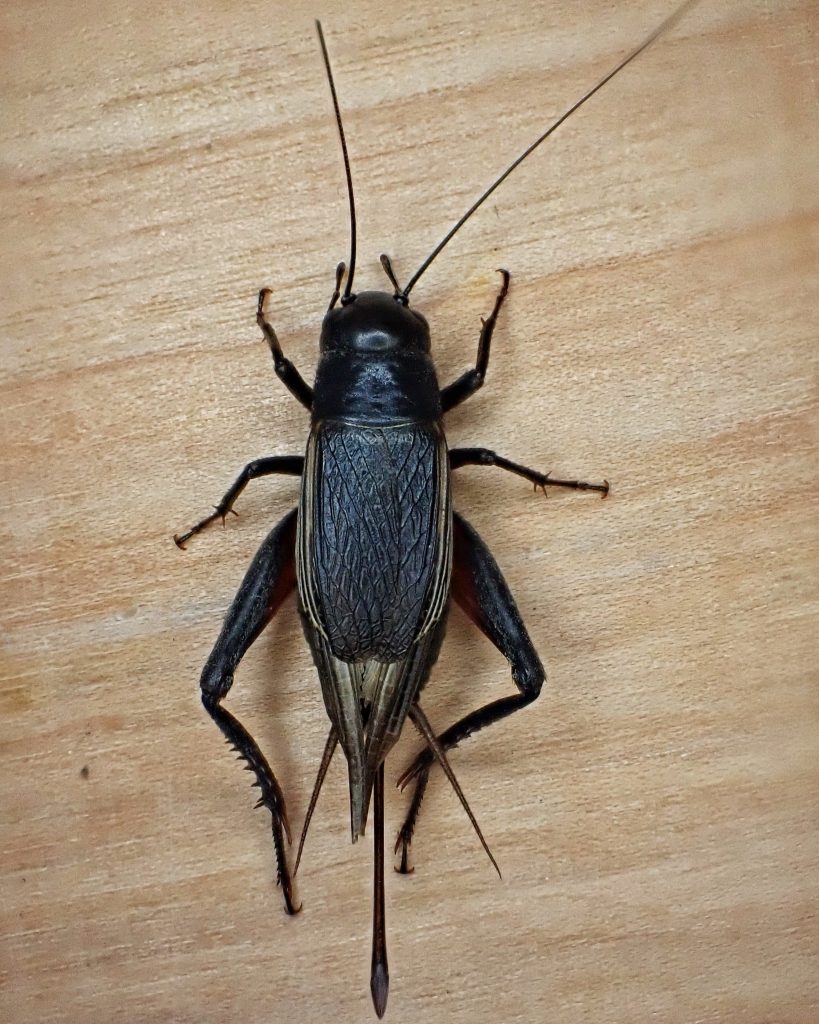
I’ve been avoiding doing any field cricket posts because there are many species and they are difficult to tell apart. In fact until the early 1900s they were all thought to be one species, and now there are 38 members of the genus Gryllus. But last Friday I saw this motionless cricket in the middle of a deserted road along the Coweeman River in Cowlitz County, Washington, and the photo op was too good to pass up. And I got lucky here because the combination of size (22mm), location, and time of year mean that this has to be Gryllus pennsylvanicus, a member of the family Gryllidae (true crickets).
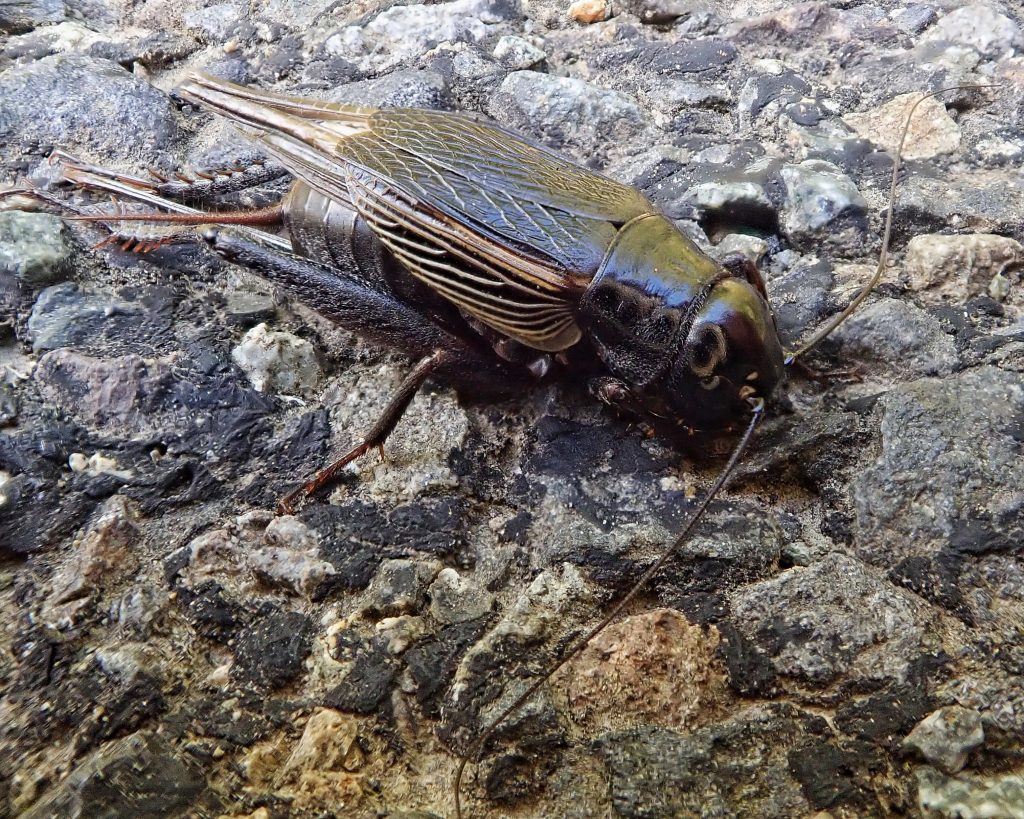
Usually female crickets are particularly difficult to identify to species, often requiring that you observe one in contact with a male that you can record singing, or at least hear if you have a good ear (which I don’t), because the songs of crickets are the best way to identify them. Yet another break on this one is that female Fall Field Crickets have very long ovipositors, and the length of this one (17mm) sealed the identification.
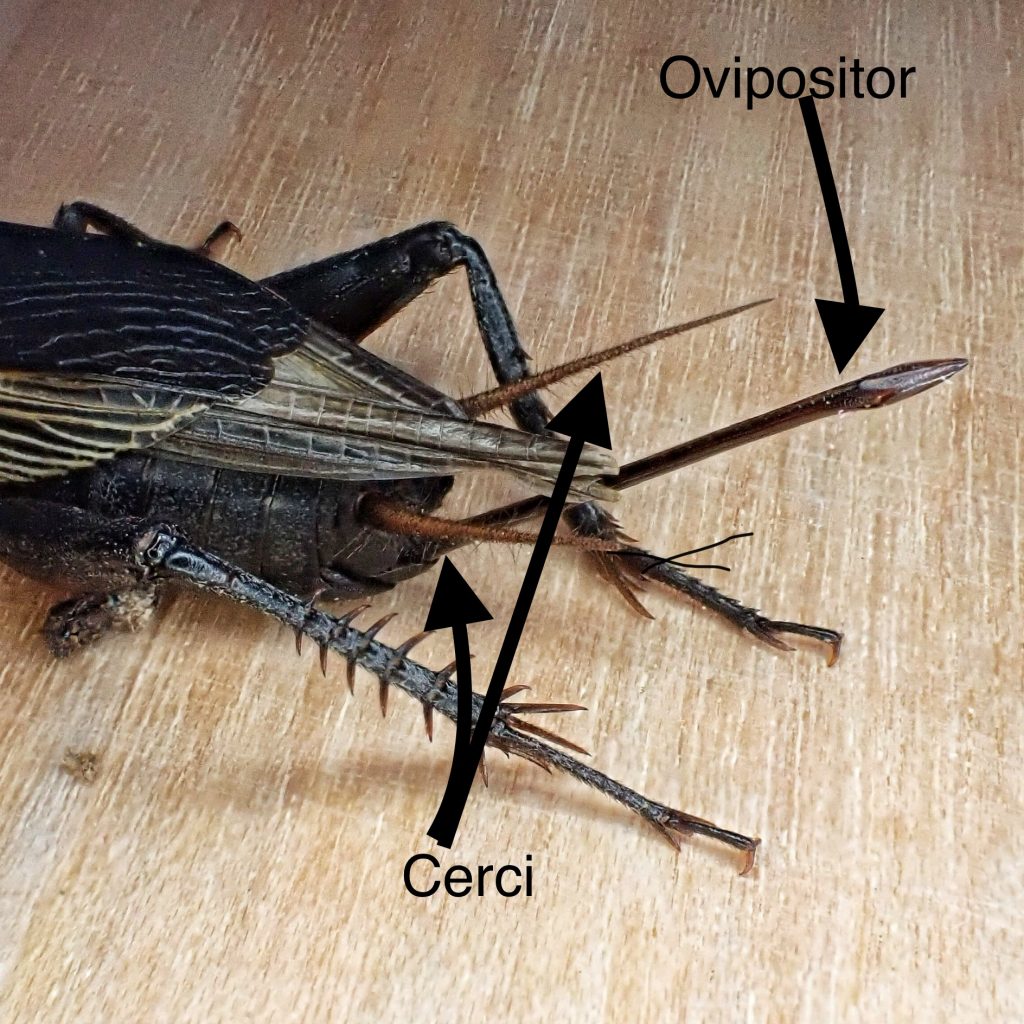
Sizes of the body, cerci, and ovipositors of the members of Gryllus aren’t necessarily diagnostic for a species, because members of a given species not only have a wide range within a population, but tend to be smaller as one moves north. But I was fortunate to be able to find the overall size range for our area in ‘Pacific Northwest Insects’ (Peterson; 2018), and incredibly detailed information in ‘Crickets of the genus Gryllus in the United States’ (Weissman/Gray; 2019).
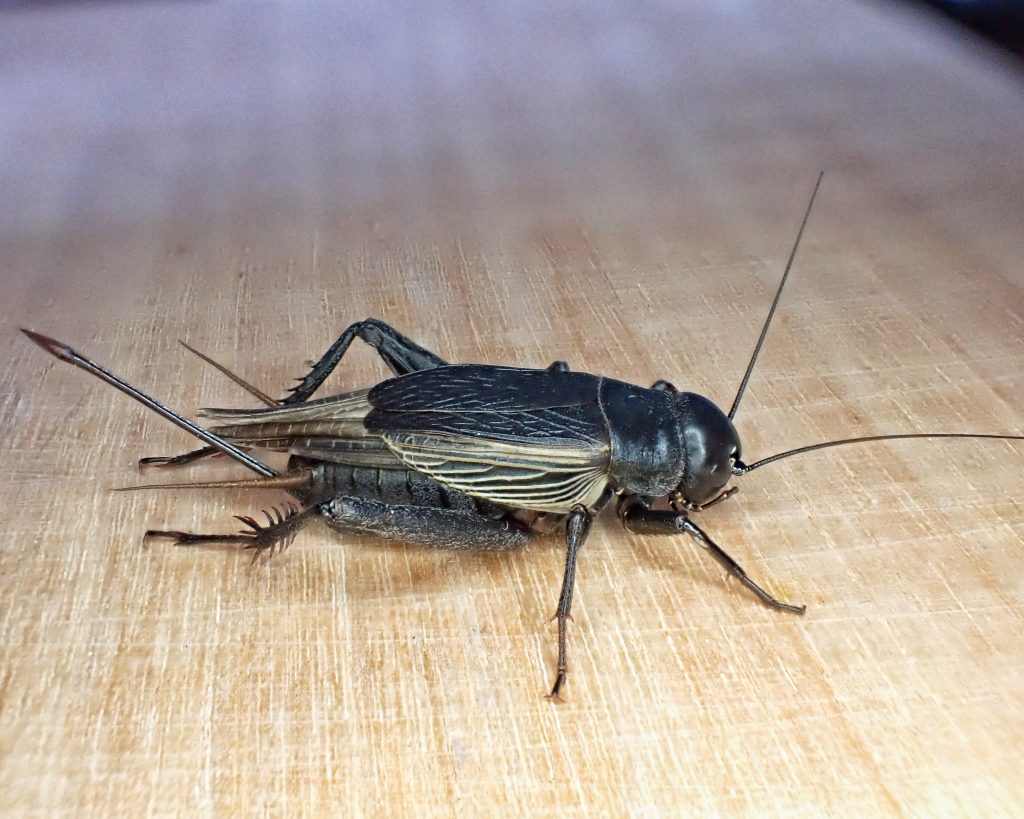
As I’m sure most of you know, crickets don’t actually sing. Instead their song is played by moving scrapers on the edge of the left forewing across file teeth on the underside of the right forewing (the number of teeth and length of the file can be important diagnostic traits). The song of G. pennsylvanicus has 3-5 pulses per chirp, at a rate of about 2 chirps per second (at 77⁰; they are faster when warmer and slower when cooler). Females move toward the males, and answer the chirps with chirps of their own. The loudest crickets attract the most females, but they also attract the most predators, and it is believed that non-singing males sometimes lurk at the edges to take advantage of females ‘left at the altar’ by the death of a prospective mate.
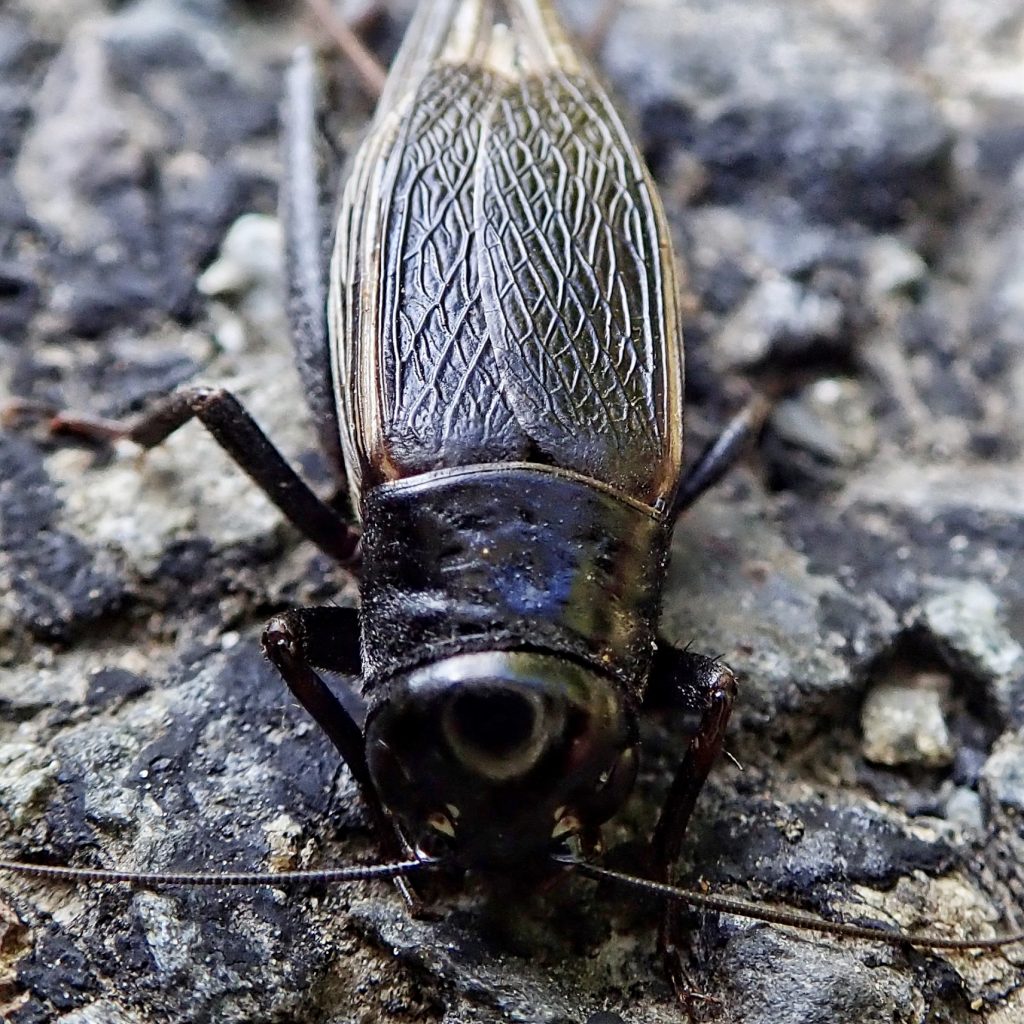
Throughout most of human history people have perceived crickets primarily through their songs. Thus G. pennsylvanicus is called the Fall Field Cricket because the adults don’t start singing until late summer, due to its eggs spending the winter in diapause, and hatching in the spring. G. veletis is the Spring Field Cricket because it overwinters as a late instar nymph in diapause, and becomes a singing adult in the spring. These are the two most common and widespread field crickets in North America. Having adults that begin singing in spring is the most common life cycle amongst field crickets, and there are only a few fall singing species. In the warmer regions down south there are also field crickets that have two, or even three, generations per year, but they are different species altogether.
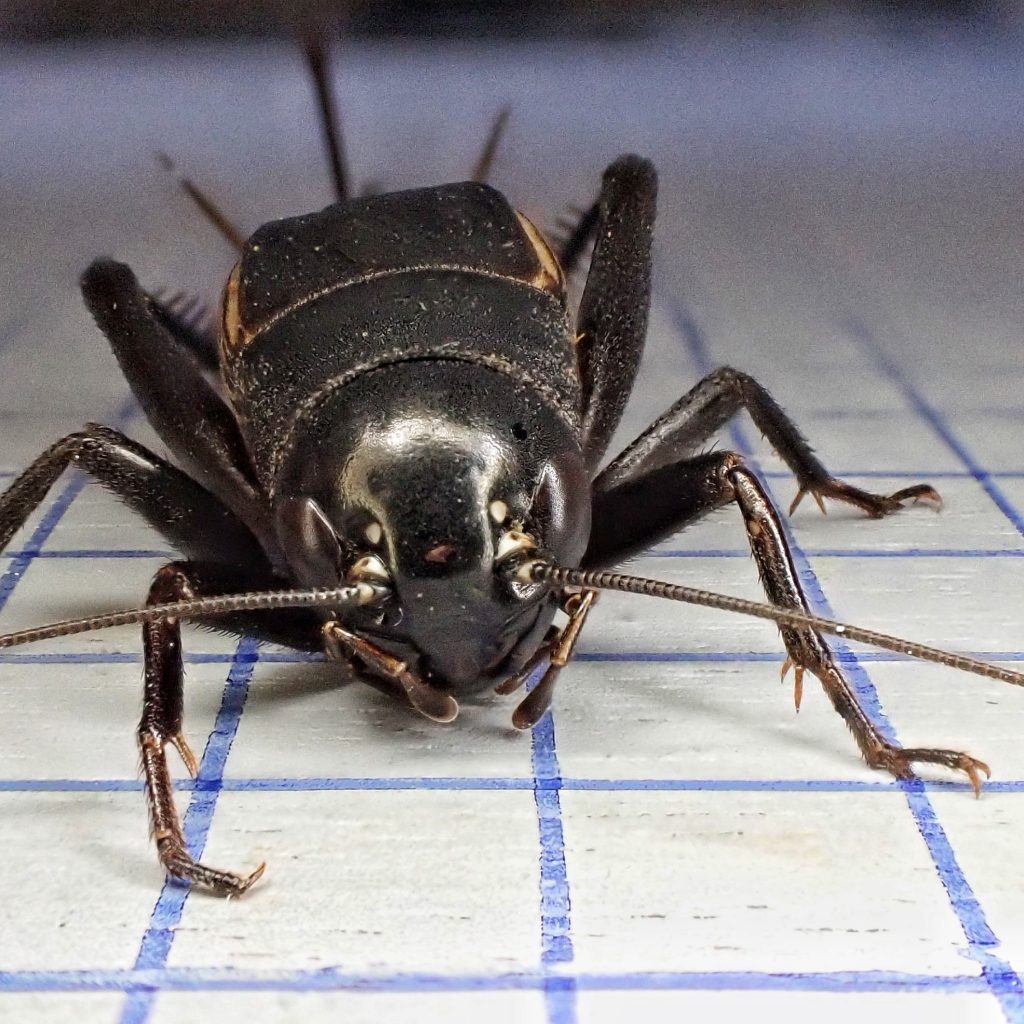
Though Fall Field Crickets have fully developed wings, their flight muscles are weak and they do not fly, possibly to conserve energy that can be redirected towards reproduction, though it may just be that in their preferred habitats they seldom have a need to travel long distances to find food or a mate.
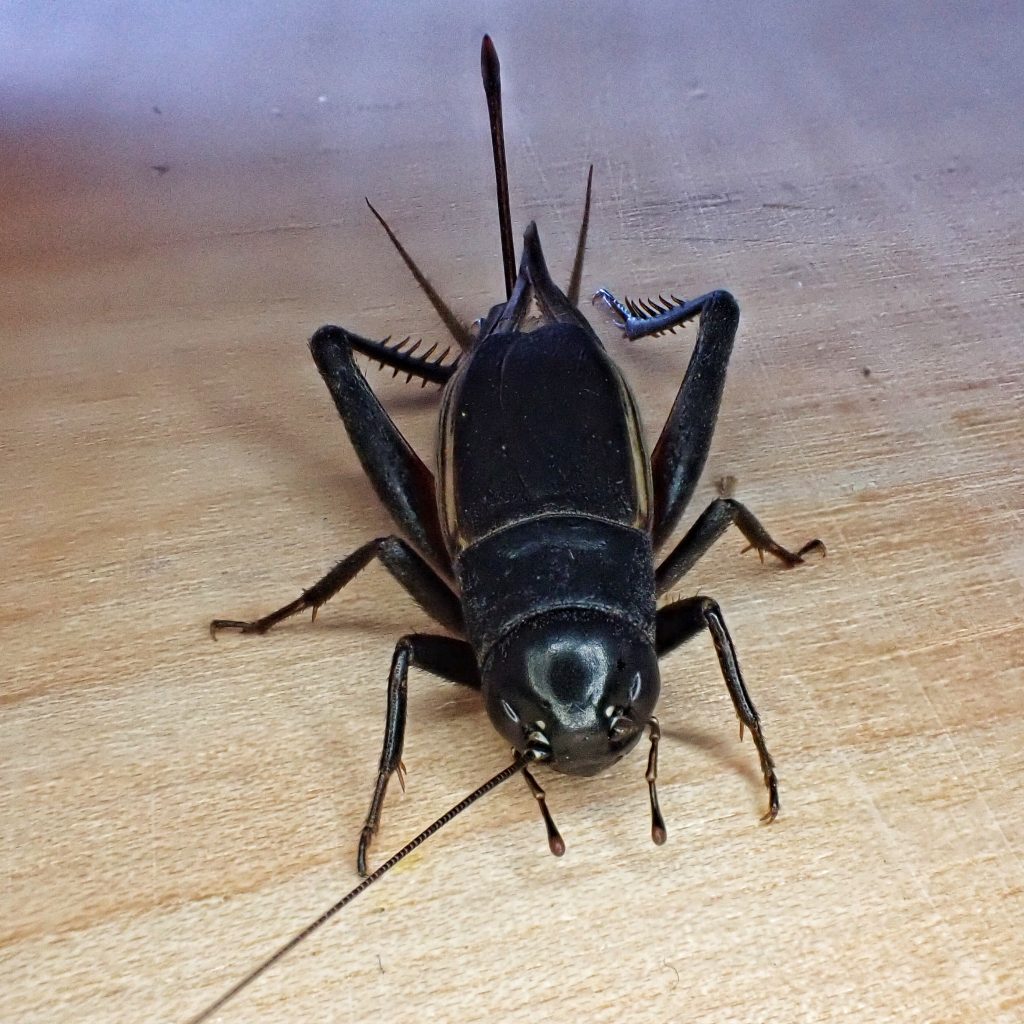
Like the Tylobolus millipedes of the last profile, Gryllus species are important components in the decomposition process of ecosystems. Not only are they able to break down high cellulose materials, but their feces help fertilize various flora, and feed tiny arthropods (like springtails), bacteria, and fungi. And from an aesthetic and nostalgic standpoint, is there anything more evocative of a peaceful summer evening than the sound of crickets calling to a mate?
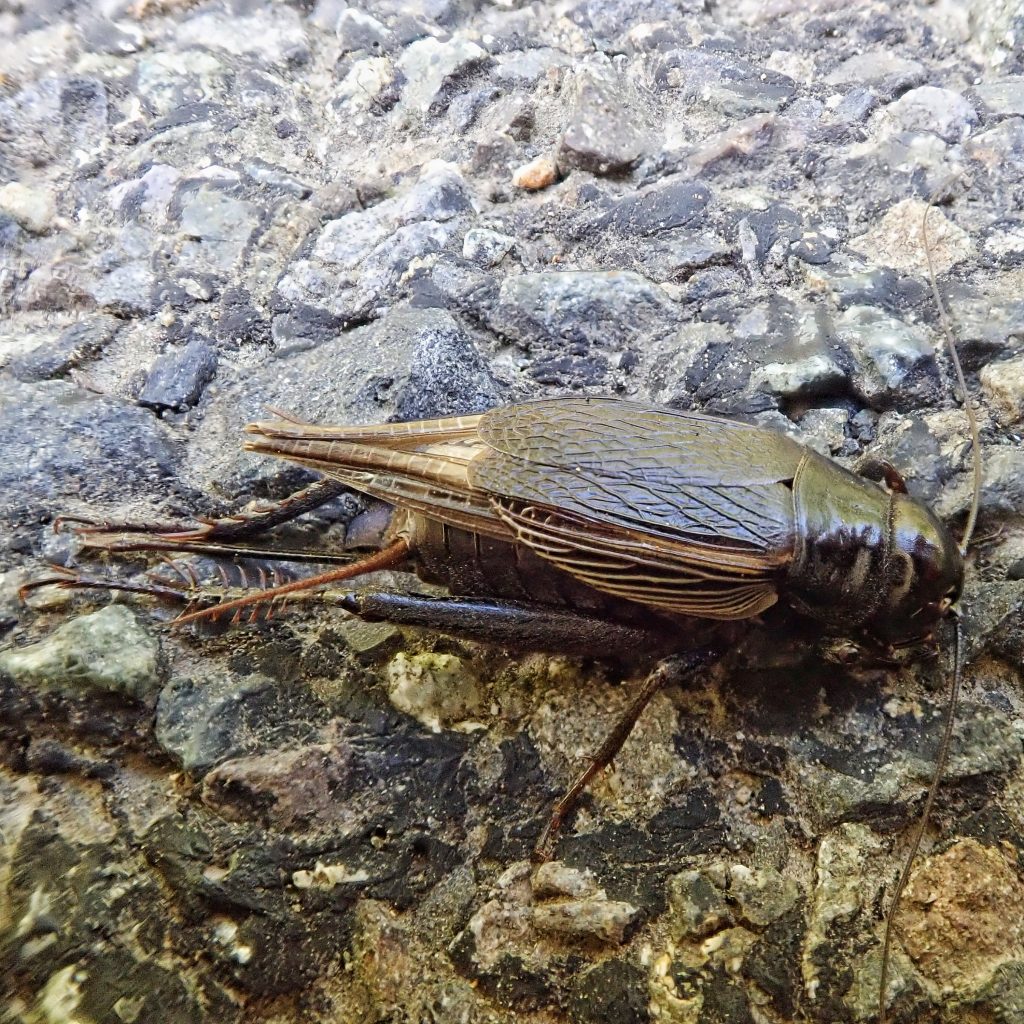
Description-Medium large (18-26mm in our region) black cricket with long antennae, short cerci (<10mm), and a long (11-22mm) ovipositor on the female; tegmina (forewings) are heavily veined, dark brown and usually end before abdomen apex, but occasionally longer.
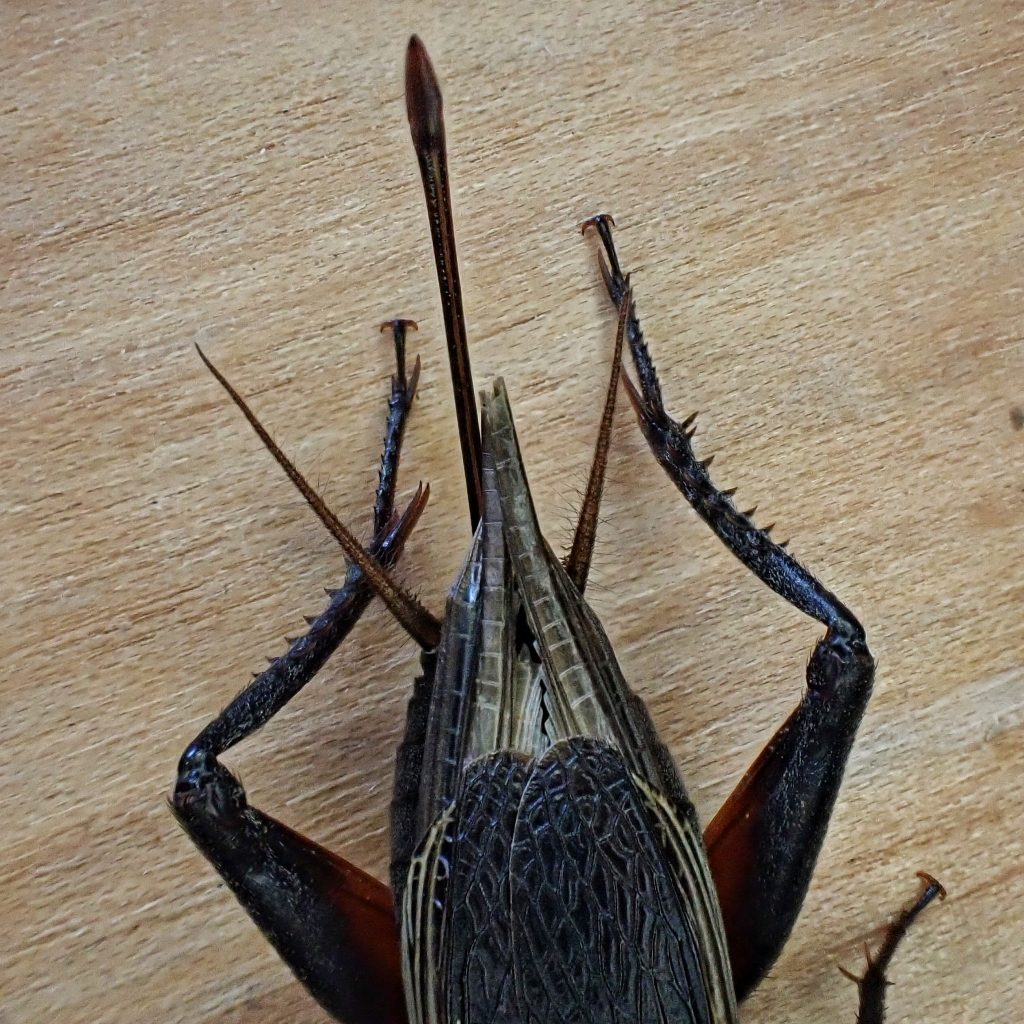
Similar species-The first two are morphologically very similar to G. pennsylvanicus, although the ovipositor in G. pennsylvanicus tends to be longer than G. veletis (10-15mm) and G. veletisoides (10-14mm), in our region; G. veletis is smaller (13-19mm in our region), emerges much earlier in the year and is active March through August, primarily found east of Cascades and in sw Oregon in our region; G. veletisoides emerge much earlier, and are only found in western Oregon in our region; G. saxatilis has cerci over 12mm and they are as long or longer than the ovipositor in females, and it is found in drier, rocky locations, primarily east of the Cascades; G. integer is only found east of Cascades and in sw Oregon in our region, and usually has a bicolored appearance due to straw colored wings; G. lineaticeps is only found in sw Oregon in our region and tends to be lighter colored and redder.
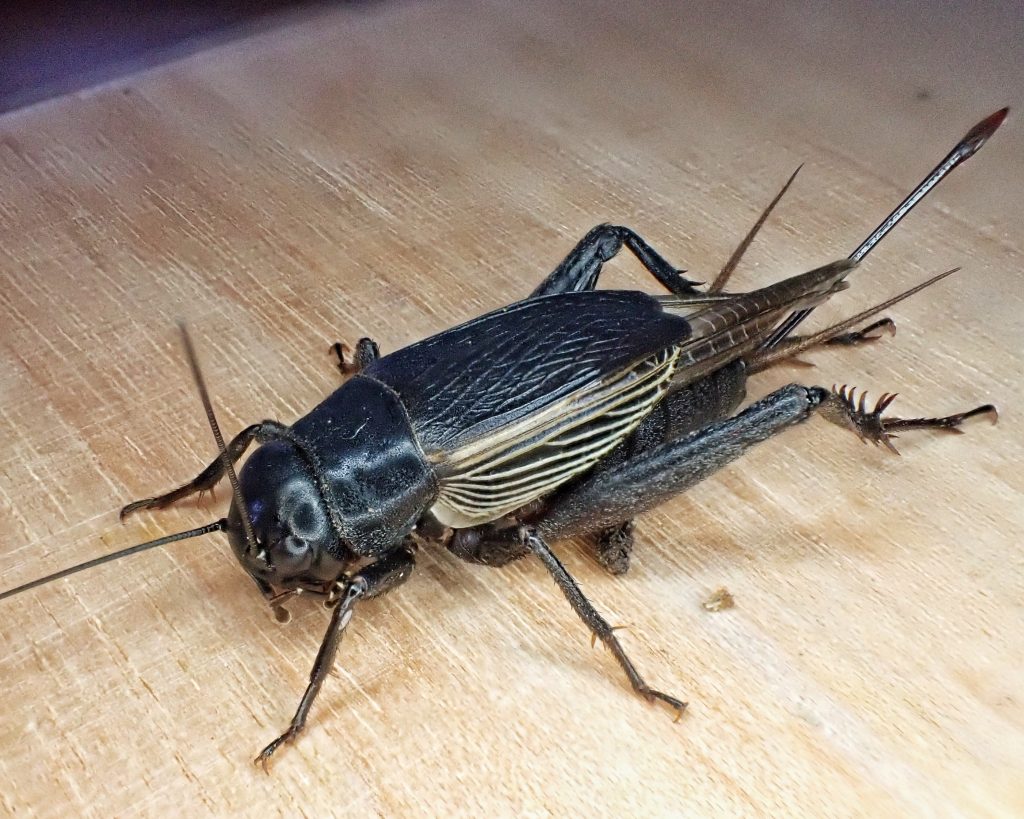
Habitat-Fields, forest openings, woodlands, lawns, basements, either in burrows, or cracks, or within the low vegetation.
Range-North American native; region wide in appropriate habitat, but more common west of the Cascades.
Eats-Dried organic materials, live plants, seeds, fruits, and even live or dead insects; must eat its body weight in food each day; during irruptions it can be a serious agricultural pest, and when managing to make their way indoors they will eat wool, leather, cotton, silk, and even nylon and rubber.
Eaten by-Insectivores of all classes; parasitized by mermithid nematodes, and tachinid flies in the genus Ormia.
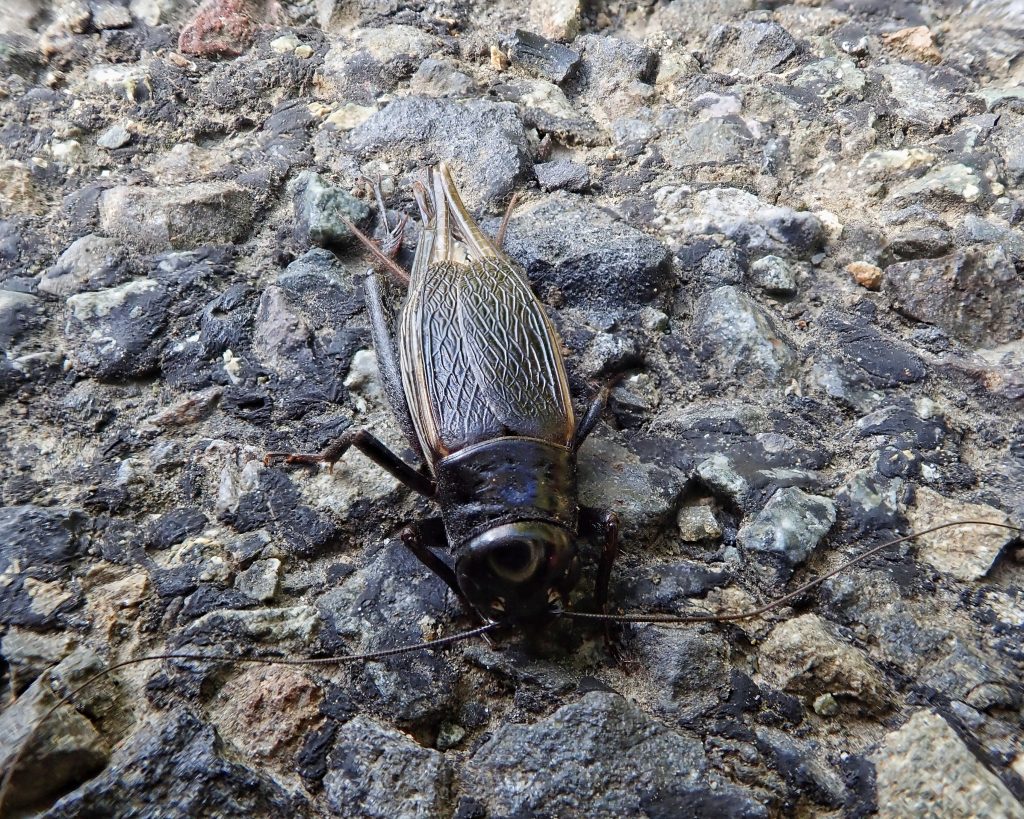
Adults active-Nocturnal; Late July into November in our region
Life cycle-Eggs are laid in fall which then overwinter in diapause and hatch in the spring; using that long ovipositor as a spade, eggs are laid in moist soil in groups of about 50, and a female may lay a total of 400 eggs; the 8 moults of the nymphal stage take about 12 weeks; adults usually die in late fall/early winter after the first frosts
Etymology of names–Gryllus is from the Latin word for cricket/grasshopper. The specific epithet pennsylvanicus is from the collection location of the type specimens.
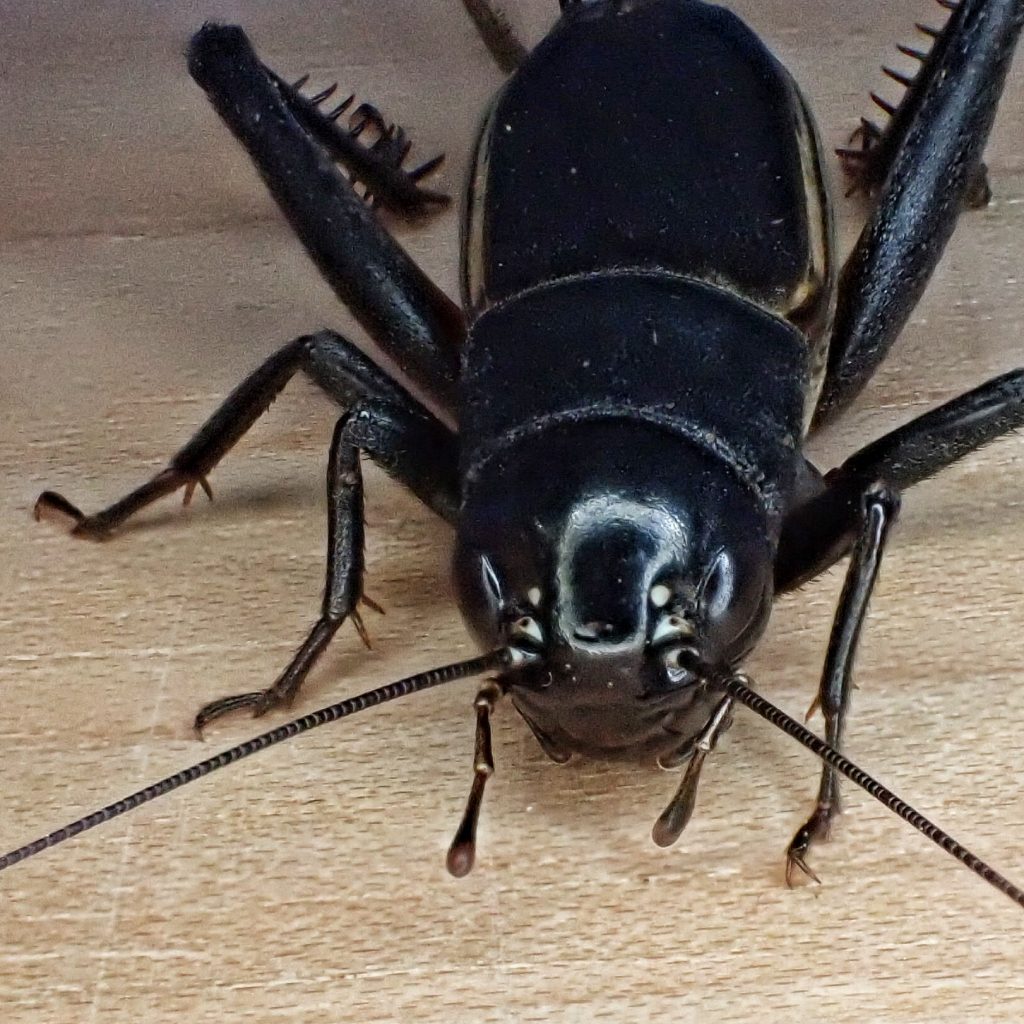
https://bugguide.net/node/view/8007
https://orthsoc.org/sina/s464wg2019.pdf
https://www.dept.psu.edu/nkbiology/naturetrail/speciespages/cricket.htm
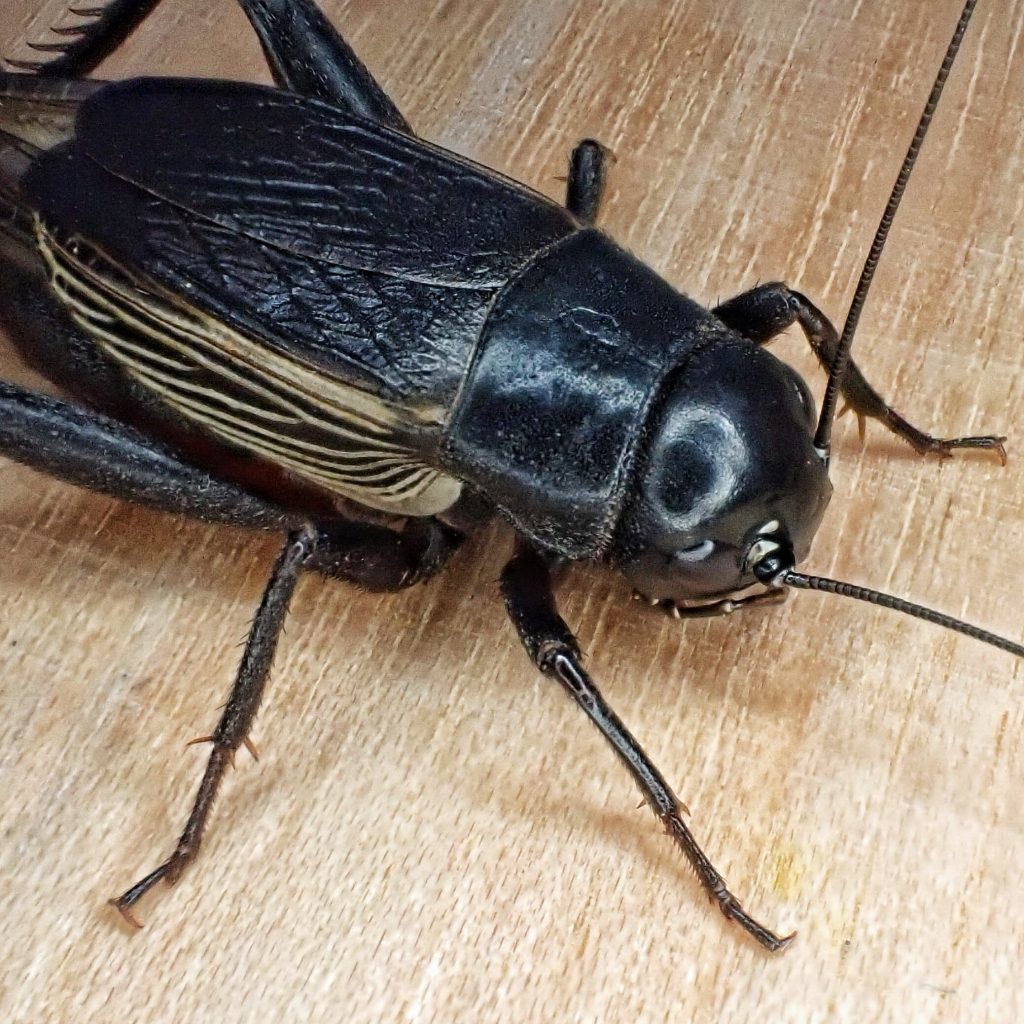
Oh Dan..so good to get home after a crazy first day loading in EDC in the vegas Valley and coming home to no power and then to read about the cricket..it’s grounding and brings me to a state 9f sub joy if not total joy to read and see pics of the little one..thank you again for your work in the fields of the PNW..may your day blessed ..thank you
Glad you made it through day 1 and this profile brightened your post-work time! Thank you!